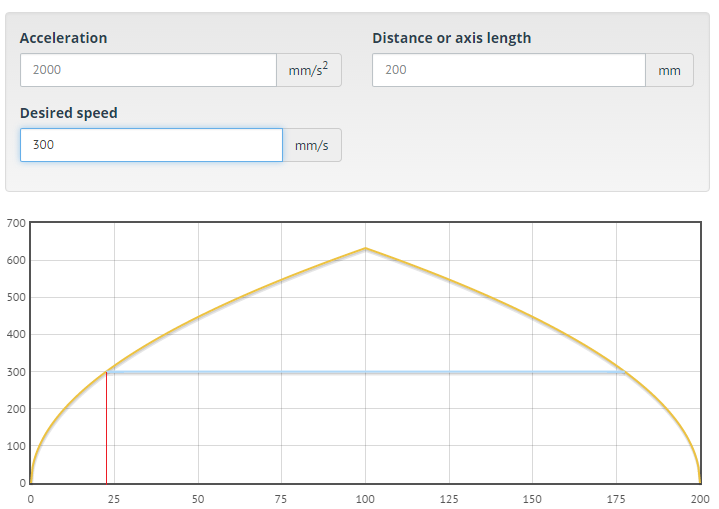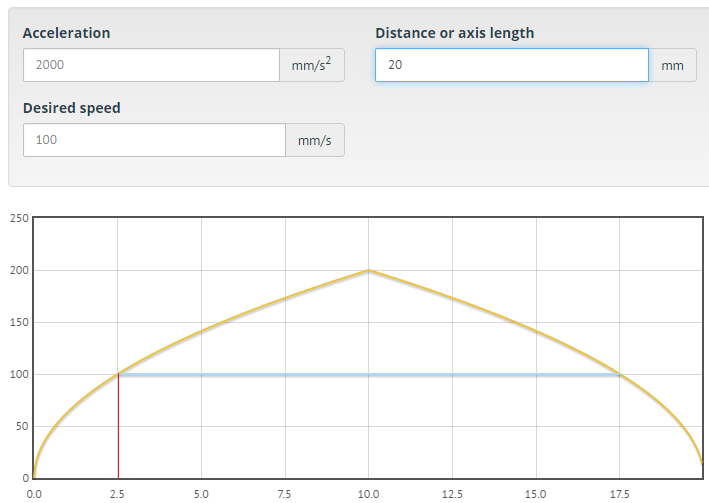Topic: Volcano/Bulldog step rate limitation
This stemmed from a conversation with wardjr, so I might as well post the answer here for everyone's benefit:
wardjr was using a Bulldog XL and experiencing problems extruding at higher speeds with a Volcano.
A Volcano tops out in terms of melt rate at about 45mm^3/sec, best case. With 1.75mm filament, that's a filament feed rate of 18.75mm/sec. With a typical ungeared hobgoblin, 200steps/rev stepper and 1/16 stepping, that's 2705 steps/sec, or 0.84rotations/sec. With a 5:1 reduction, that becomes 13525steps.sec or 4.21rotations/sec. The torque curve of a 42BYGHW609 for example is nearly flat between these speeds. On the PDF below, you're looking at the region from 500pps to 1500pps (note they used a half step driver to make that plot). So, torque isn't an issue.
The worst firmware around for step rate is probably Marlin. Marlin tops out at 10ksteps/sec, which is not enough for the top speed 5:1 ratio. Technically Marlin can go faster but it goes into the weird quad step mode that can cause problems.
https://docs.google.com/viewerng/viewer … sheet1.pdf
Of course, it is also possible that it was just being driven faster than the polymer could be melted. the 45mm^3/sec figure is a best case scenario. The 10kstep/sec limit can be avoided by simply reducing the micro stepping to 1/4 or 1/8, since the Bulldog XL has a 5:! reduction anyway it'll still be better than 1/16 micro stepping ungeared.
As a sidebar, gearing always beats micro stepping for print quality/resolution. The quality potential from 1/16 step to 1/32 step is well documented, and actually a 3:1 gear reduction at 1/16 stepping would be better than a 1:1 reduction at 1/48 stepping due to decreasing incremental torque when microstepping. In contrast, gear reduction actually multiplies available torque rather than decreasing it.


